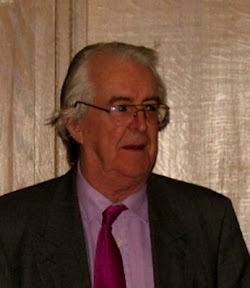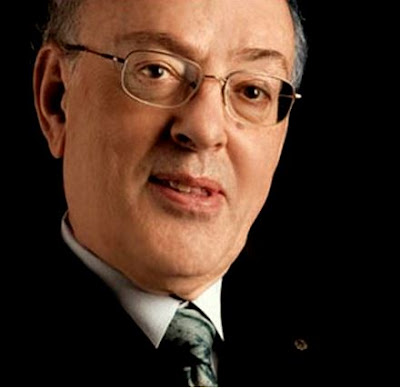I am listening through a 28 minute audio on creativity, innovation and change.
This is part of the OU MBA programme, but for me an elective 30 credits as part of the Masters in Open in Distance Education having already taken H807, H808 and H800.
I need a transcript.
I would skim read it, then listen once.
Instead, on the third listening I find I am writing a transcript, bullet points becoming sentences, sentences becoming paragraphs, those interviewed gaining a picture from Google Images and a resume from the institute where they are currently based.
Where the interviews intercut, I am taking them back to FOUR single interviews.
I am deconstructing, as if I had conducted the interviews myself.
(Two hours later I have a fourth listen. Why? Because I believe that the effort made to extract learning from these audio tracks will pay dividends. The ideas will begin to mean something)
(24 hours later I have the Media Book that supports the audio. Not the transcript that I desire, but notes from the Course Chair Jane Henry. I am struck both by what I HAVE picked up from the audio, as well as arguments/opinions that totally escaped me, that I'll have to seek out simply to be sure that these things were ever said. As I am currently on Jury Service I am struck how we as humans are, indeed have to be, selective regarding what we see and hear. We cannot take it all in. Context is everything. We are not a sponge, at best a Gouda cheese).
Creativity. Innovation and Change

Charles Handy (born 1932) is an Irish author/philosopher specialising in organisational behaviour and management. Among the ideas he has advanced are the ...
Two major things:
1.Globalisation: organisations have got bigger to be there and smaller to be human
2.From things to knowledge/ideas.
People are identifiable people with names who have to be cossetted.
Reorganise into projects and teams so that people know each other.
-
Importance of informal contacts.
-
People reach out to people.
-
Inside and outside organisations.
-
Groups are there to deliver something.
-
Informal cells made official.
-
Managers can say what is wanted at the end of the project, but not how to get there.
-
Creativity will blossom.
People will have to reinvent themselves.
-
People want to feel they are giving their lives, or a bit of it, to something that matters.
-
What is it that people need?
-
Businesses that grow out of frustrations (Michael Young, Richard Branson)

Prof. Rossabeth Moss Kanter
Professor Kanter holds the Ernest L. Arbuckle Professorship at Harvard Business School, where she specializes in strategy, innovation, and leadership for change. Her strategic and practical insights have guided leaders of large and small organizations worldwide for over 25 years, through teaching, writing, and direct consultation to major corporations and governments.
Interviewed for the Open University's module B822 'Creativity, Innovation and Change' Module she talks for the need for:
To be like leaders of volunteers.
-
I’m the leader here’s my vision, so that you can bring to it the best that you can do.
-
A sense of mission.
-
Motivated by the chance to learn.
-
Or if you have to leave.
-
An enhanced reputation.
-
You’ll get recognition.
-
People being owners of the business, to share in the value they create.
The ladders aren’t there anymore.
What’s my profession? What’s my skill set.
__________________________________________________
The Hollywood model
______________________________________________________
For me this is a concept that rings most true having contemplated how to assemble a team of people with different skills, indeed, why a variety of skills are necessary and that these should be distinguishable and come from the contrebutions of several people. Currently, social media, is vested in one person, whereas it should be shared across several skill sets. The creative teams in advertising are made up of a copywriter and art director, in a web agency we had an editor, designer and programmer. In each case a producer is required too.
_________________________________________________________________

Prof. Charles Hampden Turner. The Judge Institute, University of Cambridge.
Charles Hampden-Turner (a dilemma enthusiast), they talk these days not so much of country stereotypes as the need to understand individuals. He received his masters and doctorate degrees from the Harvard Business School and was the recipient of the Douglas McGregor Memorial Award, as well as the Columbia University Prize for the Study of the Corporation.
Networks and accelerating returns.
-
A critical moment when the network becomes incredibly valuable.
-
The concept of the employee society is going to die.
-
A buffalo and being hunted down by Indians again ?!
-
Vs. being fad proan.
-
Think in terms of paradox.
-
Time and motion studies.
But it ran to its own limits.
____________________________________________

Professor Henry Mintzberg, OC, OQ, FRSC (born in Montreal, 1939) is an internationally renowned academic and author on business and ...
-
People who are truly empowered don’t need to be empowered by managers. It doesn’t bring about more creative organisations.
-
Learning organisations as they have a healthy culture.
-
Build cultures that support maverick, a ‘why not?’ culture that a ‘Why?’ culture.
(See more about organisational configurations)